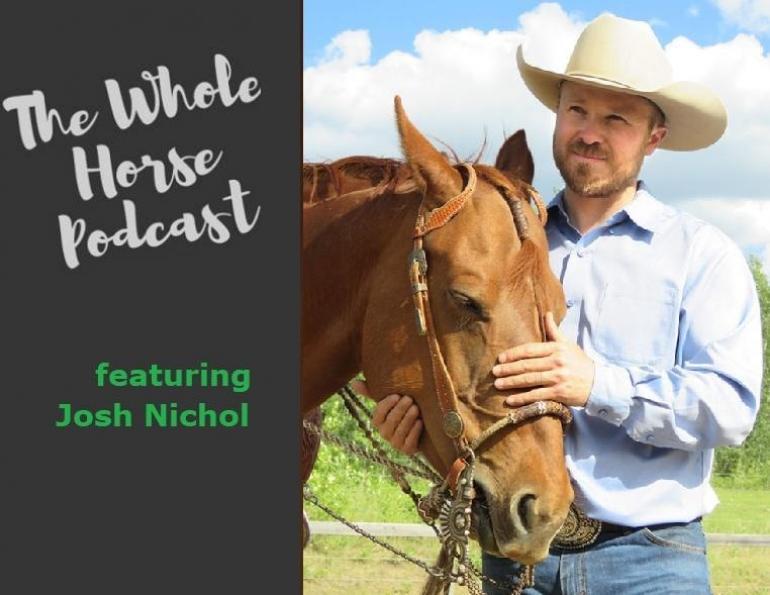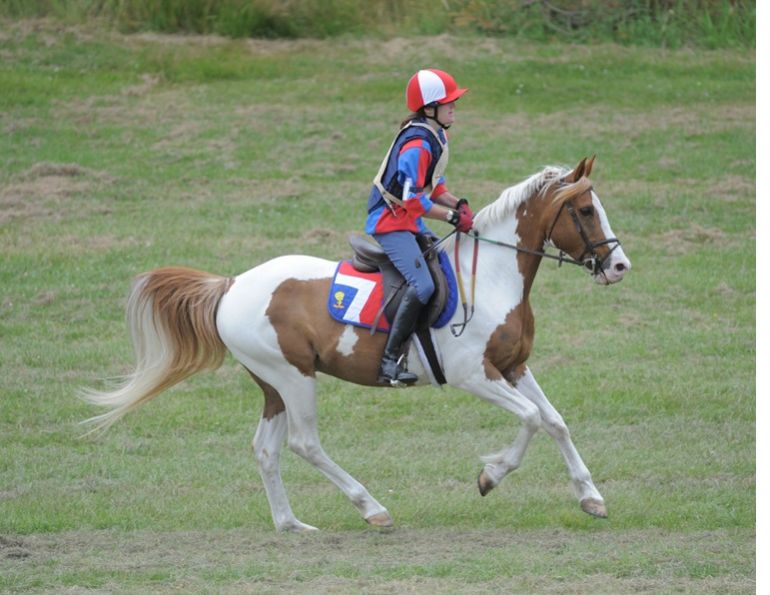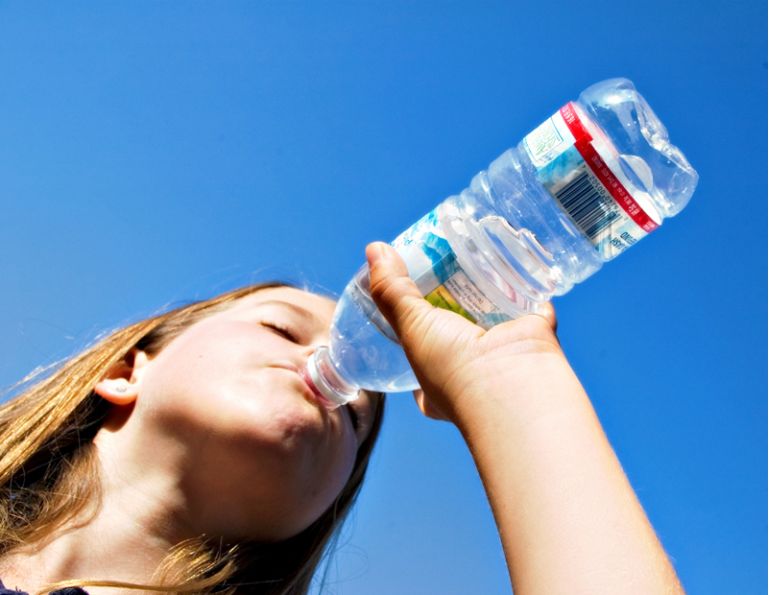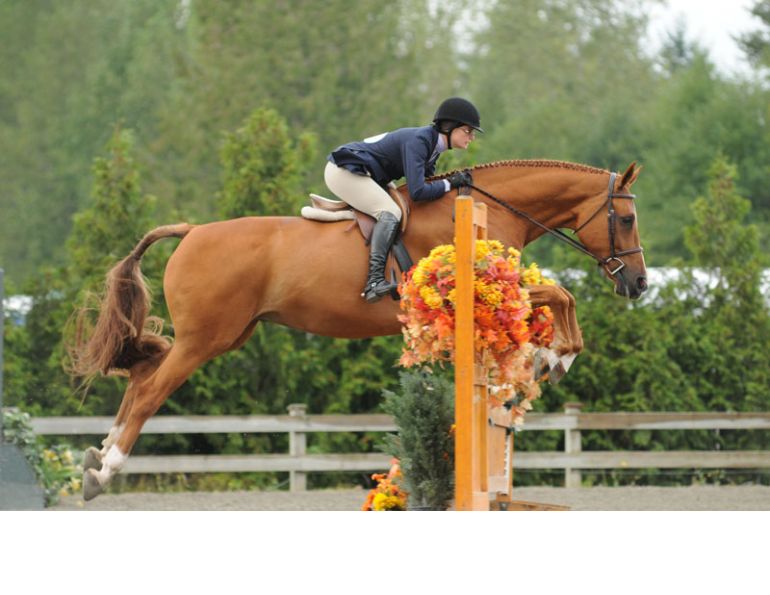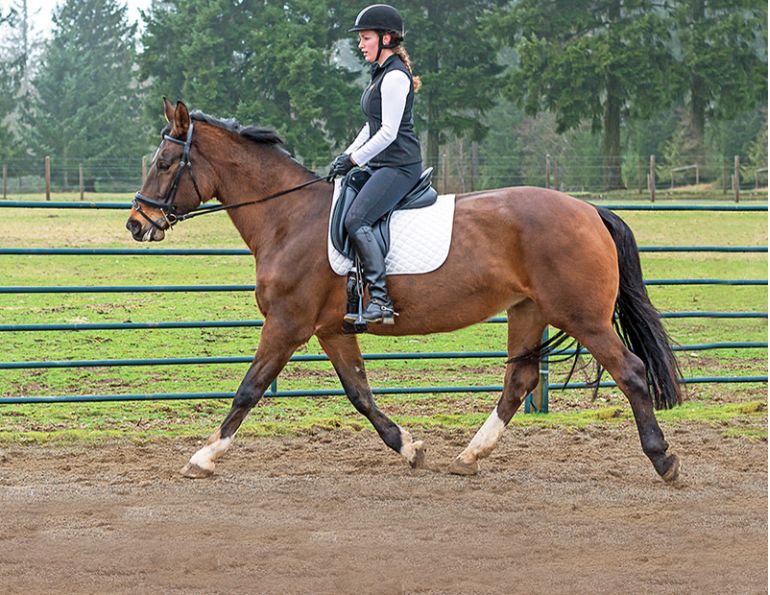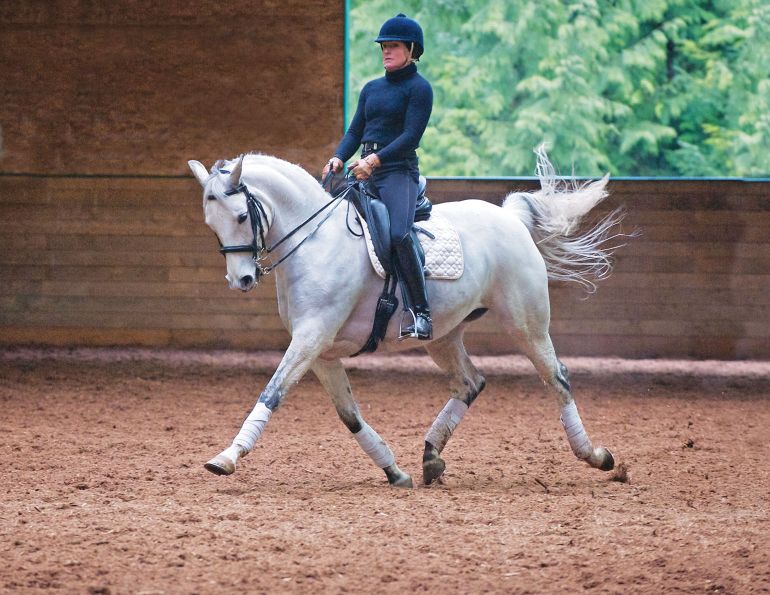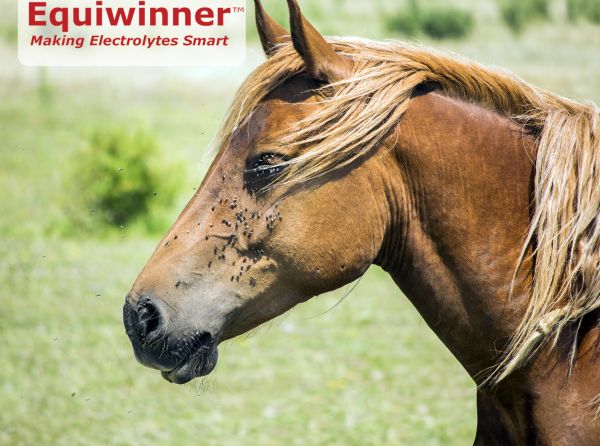Why get fit to ride?
By Sandra Verda-Zanatta, Level 3 High Performance Coach
Being fit to ride certainly has benefits for riders but there are also benefits for our horses. The horse-and-rider partnership is unique. We owe it to our horses to be as balanced and coordinated as possible to ensure their comfort and ability to do what we ask with ease. We are not all built the same and not everyone will assume the “ideal” riding posture and position. Still, we can all work towards better posture, balance, and coordination, resulting in clearer, more effective communication with our equine partners.
Horses often mirror the rider’s position faults and weaknesses. The rider who is asymmetrical and unbalanced can significantly impact their horse, and easily create or exacerbate crookedness. For example, horses that tend to be stiff on one side, prefer to canter on one lead more than the other, fall in on the circle, or are heavy on the forehandc are often reacting to the rider to some degree. Habits such as collapsing in the torso, leaning to one side, unequal leg pressure, sitting unevenly on seat bones, or uneven contact in the reins are all common rider issues. Most of the time riders are unaware of these habits; they can’t feel when they are not straight or centered, so the first step is to improve rider proprioception.
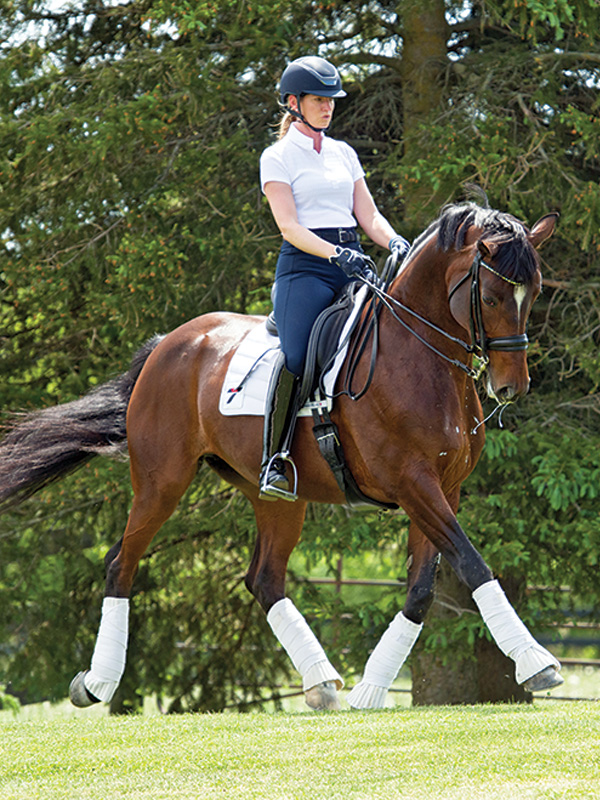
Riders need to stay square, stable, and balanced in the saddle, yet with the elasticity to fluidly absorb their horse’s movement. Photo: Clix Photography
Proprioception is awareness of where our body is in space and how to control its parts and move intentionally. If we take the time to develop better body awareness and control, we can improve our horse’s comfort, straightness, way-of-going, and overall performance.
Pilates is a total body strengthening program focused on core strength that addresses coordination, balance, flexibility, posture, and alignment. It teaches riders to isolate certain muscle groups and have simultaneous control of different body parts. It teaches body control in movement and is excellent cross-training for equestrians.
Riding is dynamic and riders need to be able to maintain balance and be stable yet elastic in their position to absorb their horse’s movement fluidly. Tightness in the rider’s hips and back can create the same in the horse’s back, making it difficult for the horse to maintain consistent rhythm and regularity of the gaits due to increased tension throughout its body. Rigidity in arms and shoulders can lead to inconsistency in contact and decreased suppleness, jeopardizing the horse’s ability to relax and go confidently forward. With regards to balance, if a rider is not centered with equal pressure on seat bones and in the stirrups, it creates a balance issue for the horse. This in turn can cause a myriad of issues including unequal muscle development, back pain, and limb lameness.
Related: How the Pros Stay Fit to Ride, Part 1
In addition, if you think about the requirements of different equestrian disciplines — leg yields, trot half- passes, flying changes, halts — these movements require timing, coordination of the aids, and the ability to stay square and balanced in saddle. The more aware you are of how your body and aids affect your horse, the better you can achieve desired results. To give you an idea of what it feels like to your horse when you are not centered and square, imagine carrying a heavy backpack off to one side while you are hiking up and down hills; now think of your horse on a long trail ride carrying a rider who sits off to one side. It’s fair to assume that there will be discomfort, sore muscles, and increased fatigue on the weighted side, which over time can lead to additional problems physically and mentally.
At any level and in any discipline, riders are athletes and should consider themselves as such. Whether you are a recreational or competitive rider, improving your posture and learning how to use your body more effectively and efficiently will benefit your riding and overall physical well-being. It will also help promote your own “soundness” as well as that of your horse so you can enjoy a long, successful partnership and many happy trails together!
Balance and Body Awareness Exercises
Photos below courtesy of Sandra Verda-Zanatta
The following exercises can be done at home to start improving your alignment, balance, and overall body awareness. The weighted ball used in these exercises should be three to five pounds to start, increasing to ten pounds as strength improves.
1. Balance Board Squats
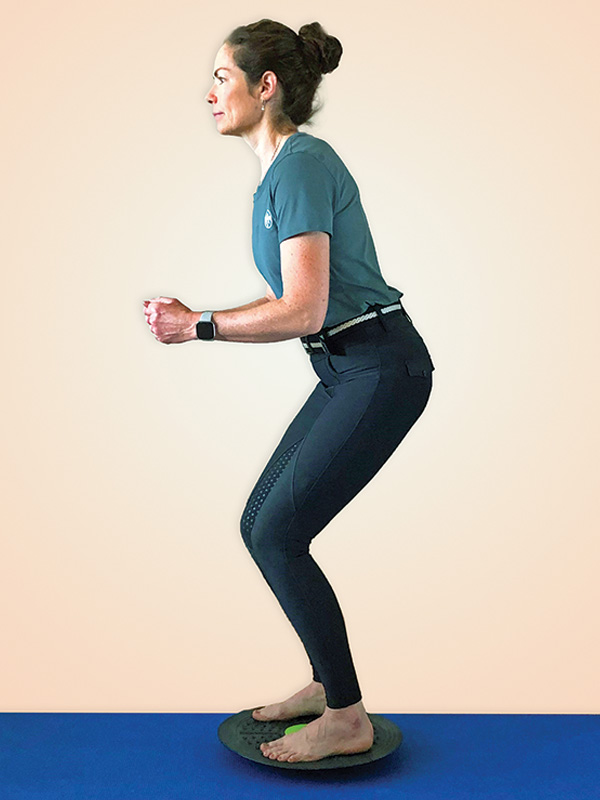
Starting position: Stand with feet hip-width apart and knees slightly bent — try to keep the board level and focus on an even feel in your feet. Draw your belly button towards your spine to connect your core and stabilize your lumbopelvic region. Close your hip angle and take the upper body slightly forward. Keep your shoulder blades flat on your back and hold your arms in the riding position. Once you feel stable, start doing small squats to challenge your balance. Keep your eyes up and on a focal point.
2. Balance Board Squats with Flex Band
In the starting position (described in number 1) add a flex band attached to something sturdy and stationary. Hold the band like you’d hold your reins.
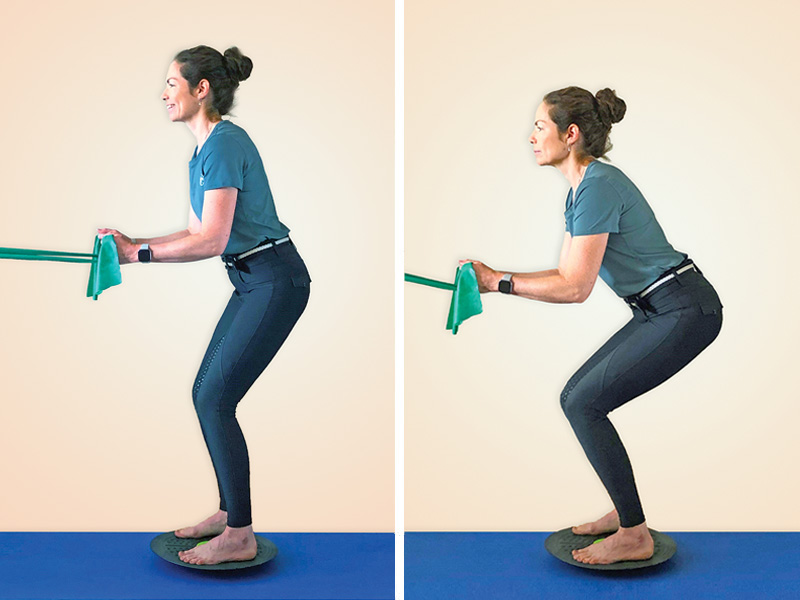
A (above): Retract your shoulder blades by drawing them towards each other, closer to your spine. Focus on the movement coming from your shoulders, not your elbows. Then release to neutral and repeat.
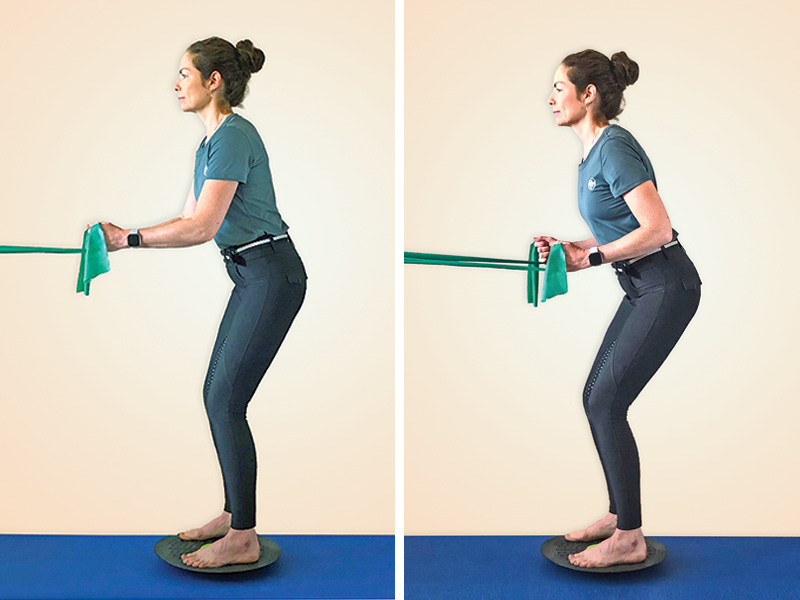
B (above): Perform arm pulls with both arms and with alternating arms.
3. Balance Board Squats with Oblique Rotations, Weighted Ball

Stand on the balance board with a slight bend in your knees, stretch up tall through the top of your head and keeping hips square, rotate torso holding weighted ball in front of you. Keeping your shoulder blades flat on your back, rotate your upper body to one side and hold — imagine your hip bones with lights on them shining directly forward. Repeat 10 times on each side.
4. Balance Board Squats with Weighted Ball Lift
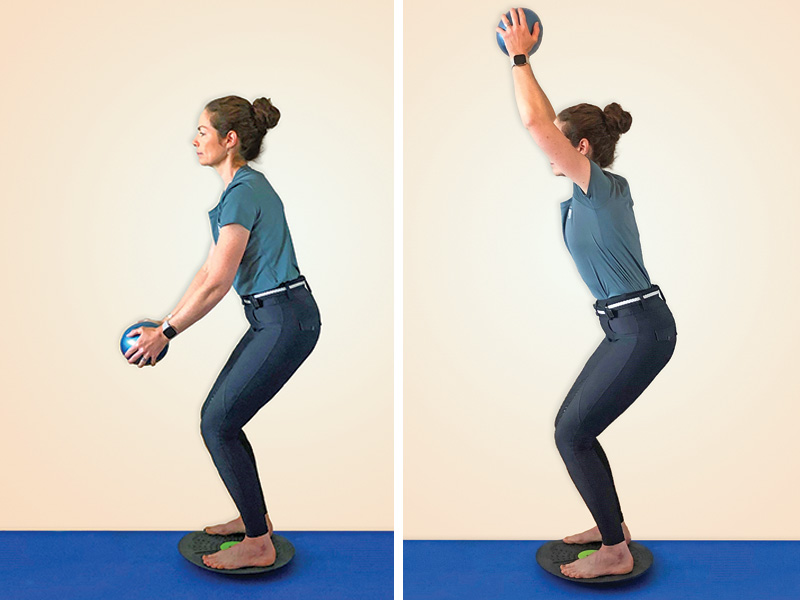
In starting position, lift the ball up towards the ceiling as you straighten your legs. Keep your belly button drawn in towards your spine and think of buttoning your rib cage together to maintain a neutral spine, avoiding extension of the mid and upper back. Repeat 10 times on each side.
5. One Leg Standing Balance, Weighted Ball
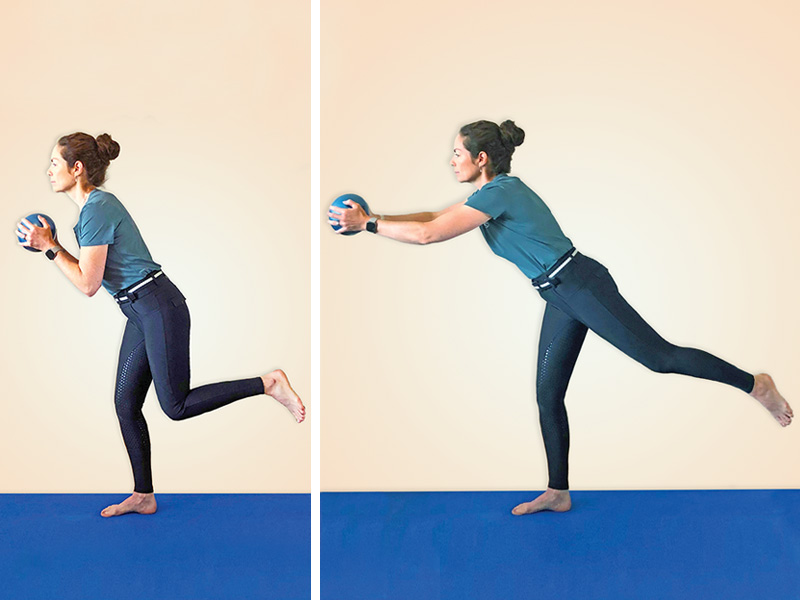
Stand on one leg with your knee bent, close your hip angle slightly, engage your core and set shoulders. Press the ball forward as you extend your leg back, keeping your hips square. Repeat 10 times each leg.
6. Breathing Note
As you work through these exercises, it is imperative to breathe fluidly. Breathing is the key to relaxation and centeredness.
- Remember to exhale on effort.
- When you inhale, imagine your lungs and rib cage expanding to the sides and back. Keep your shoulders down and soft, and your neck long.
- When you exhale, think of funnelling air out of your lungs, drawing your belly button in so you can feel your abdominal muscles contract gently.
Time spent improving your fitness will improve your riding ability, and your horse will thank you for it!
Related: 11 Exercises to Improve Your Riding Position
Related: Rider Posture - What Is Actually Involved?





